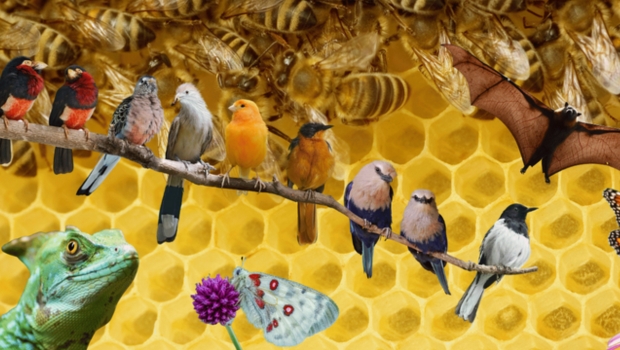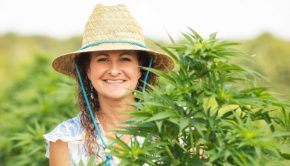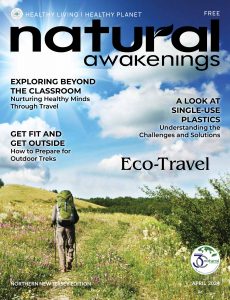Pollinator Corridors: Tips to Reestablish Lost Habitats
A well-known Chinese proverb says, “The flapping of the wings of a butterfly can be felt on the other side of the world,” poetically reminding us that small actions can produce large effects. When it comes to the world’s disappearing pollinators, the modest steps we take today can generate life-saving results tomorrow.
According to the U.S. Fish and Wildlife Service (FWS), “Pollinators provide vital benefits to people and wildlife, keeping animals and plants that we depend on thriving while bringing us food and supporting the economy.” Almost 90 percent of flowering plants depend entirely or in part on animal pollination, and yet, the FWS reports that pollinator populations are on the decline. One way to support these important species is to create a pollinator corridor—a pesticide-free, native-plant zone that provides food and shelter for indigenous pollinators.
The Pollinator’s Role
While the word pollinator may conjure up images of butterflies and bees, the category is much broader and includes birds, bats, lizards, moths, flies, beetles, wasps and some small mammals. “Virtually every ecosystem on Earth that contains flowering plants depends on animal pollinators,” says Kim Eierman, author of The Pollinator Victory Garden: Win the War on Pollinator Decline with Ecological Gardening. “Many are keystone species in the ecosystems where they occur. If a keystone species becomes extinct or vanishes, that ecosystem fundamentally changes, and not for the better.”
From apples, melons and potatoes to almonds, coffee and cocoa, the food we eat is not available without pollination. Losing just one pollinator can have a significant impact. Without bees, fruit and nut trees produce fewer and smaller crops, if any. Of the top 100 edible flowering crops, 80 are pollinated by honeybees.
“Every ecosystem is dependent on pollinators to maintain healthy environmental balances in global food webs,” explains Jen McDonald, the founder of Garden Girls, a Houston-based company that designs and installs home landscapes. “Pollinators don’t make food just for us, but also for livestock and virtually all other living things. Many plants that require pollination are also needed for shade habitats for birds, insects and small animals.”
Challenges Facing Pollinators
The decline in pollinators is attributed to a loss of feeding and nesting habitats that occurs when native plants are replaced by non-native grasses, farmlands and urban landscapes. Pesticides, chemicals, parasites, non-native species, new diseases and climate change are also modern-day threats. Monarch butterflies are considered vulnerable to extinction. Nearly one in four bees (347 native species) are at increased risk of extinction. More than half of the 154 North American bat species are at severe risk of population decline.
Designing a Pollinator Corridor
The good news is that when native plants are re-introduced, pollinators return. “Abundant, diverse pollinators ensure fertile, resilient landscapes and secure food systems for communities, and backyard gardens can restore numbers that strengthen regional plant reproduction,” says Kiersten Rankel, a botanist for Greg, an app that helps people optimize their plant-growing efforts.
To get started, select a strip of land, rooftop, wall or yard that supports pollinators, including their migration, foraging and overwintering. Next, pick native and flowering plant species for the space. Perennials require less maintenance, as they come back each year. Start small. Even a few potted plants or a converted curb strip can have a big impact. Avoid using pesticides and herbicides. Beyond flowers, be sure to also include shrubs, twigs, rotting logs, branches, vines, ground cover and bare gravel. Determine if it is helpful or harmful to remove leaves from the ground in the fall and reduce or eliminate mowing practices, especially on roadsides or curbs.
To make a bigger impact, talk with neighbors and community members to create a larger corridor. Consider working with local schools, colleges, nature-focused nonprofits, government officials that oversee parks and city planning, nurseries and farmers. The more people that are involved and invested in the corridor, the higher the odds of its continuing success.
Create a map to see the full footprint of the corridor; fill any gaps and remove invasive plant species. Include a wide diversity of native plants to serve pollinators at each stage of their life cycles. The Wild Seed Project suggests having at least 10 pollinator-friendly plants to support them year-round with continuous blooms and shelter.
An example of a giant pollinator corridor is Project Wingspan, located in the Midwest and Great Lakes region. The people behind this program are striving to create 18,000 acres of high-quality habitat to support local wildlife and pollinators. On a smaller scale, the town of Orleans, Massachusetts, is working to ensure their entire community is pollinator friendly.
There has never been a better time to start or join a pollinator corridor. Those efforts could be the flap of a butterfly’s wing that changes the future for these vital creatures.





























